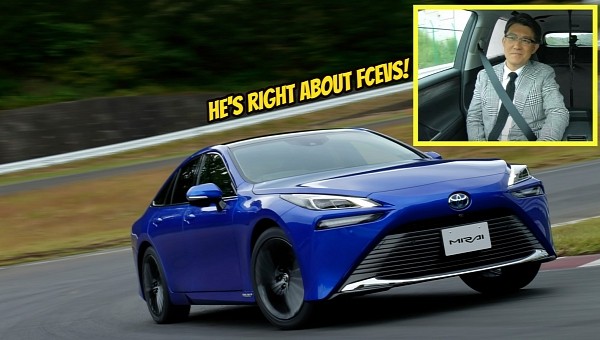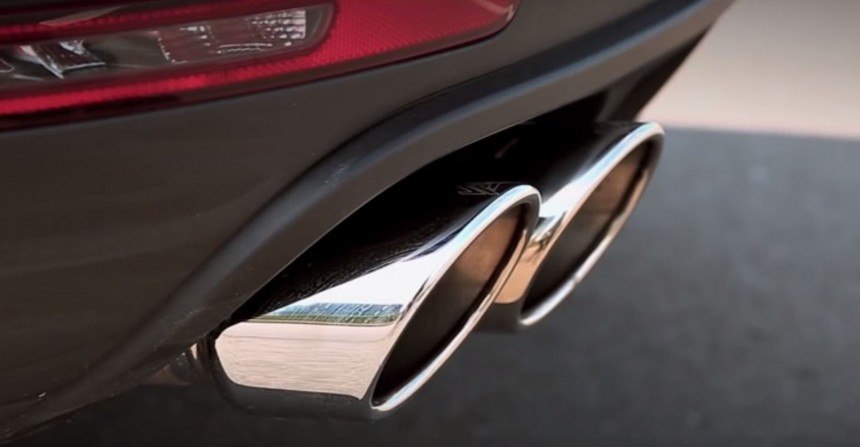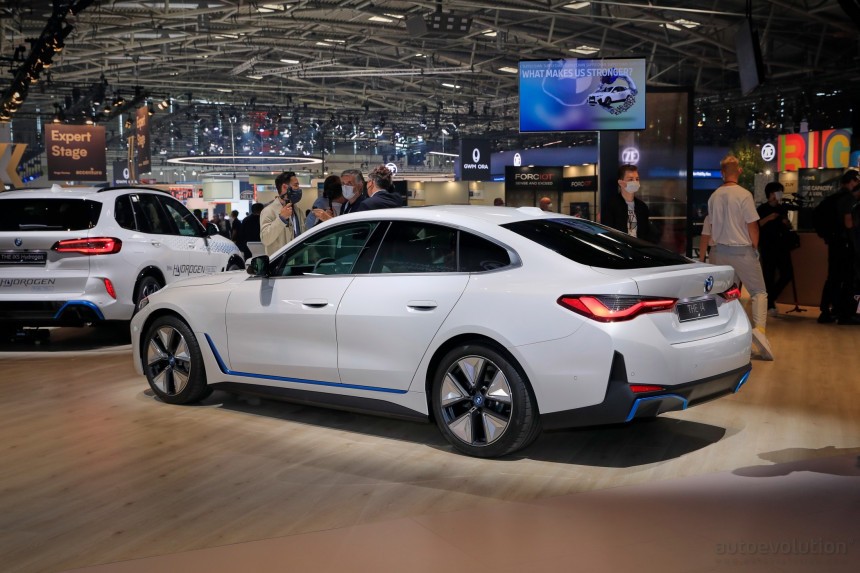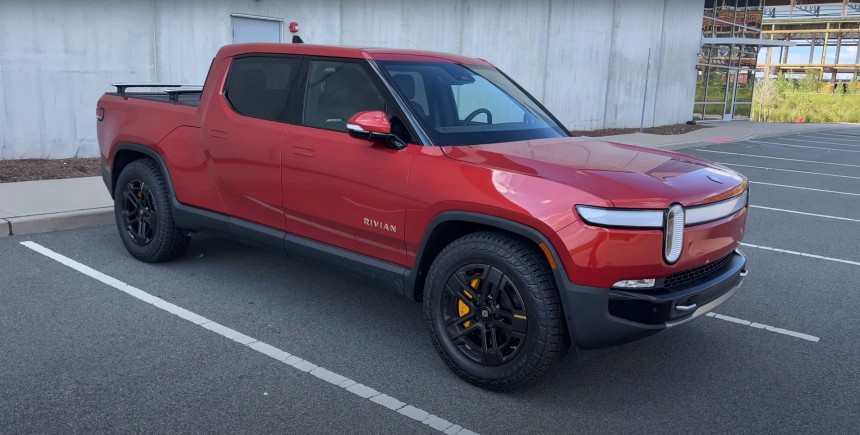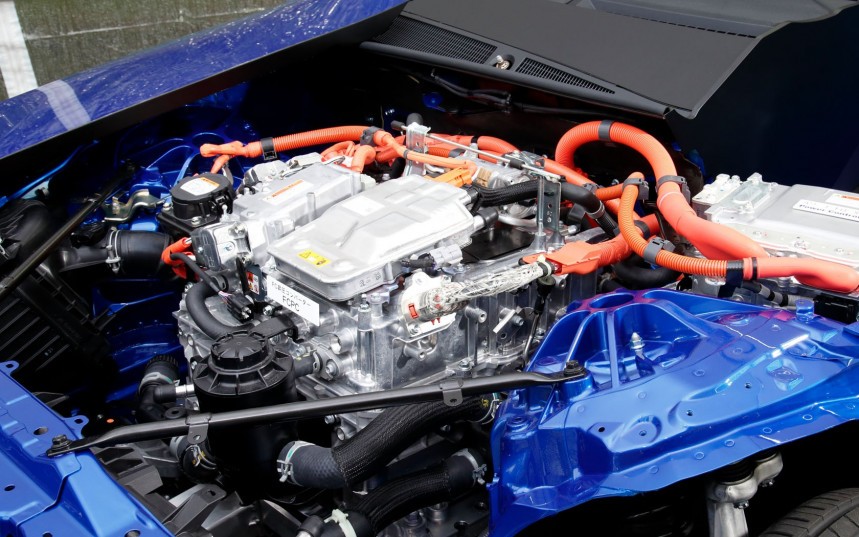Right now, a certain majority believes that cars must slowly but definitively move away from the internal combustion engine and embrace the battery-electric architecture for a future where personal mobility doesn’t leave a longstanding mark on the environment. However, Toyota has something else in mind and the Japanese brand is right in not thinking like most currently do.
One somewhat controversial idea is slowly yet surely starting to be considered as the solution to climate change – the automotive world must give up on burning fossil fuels. Some may still deny that gas- or diesel-powered vehicles carry an important part of the blame for heating our world and causing various health issues for those living in places where congestion is a reoccurring issue or regulators have not passed the right laws.
However, both the Environmental Protection Agency (EPA) and the European Environment Agency (EEA) have published reports that show cars, vans, pickup trucks, and semi-trucks are to blame for helping global warming intensify and for causing health problems in people.
Yes, planes and ships are part of the problem too. But that's a topic that is worth tackling separately.
According to EEA's data collected over 19 years, CO2 emissions from passenger cars in the EU increased post-2000 despite engines becoming more efficient and less polluting throughout the years. That's another cold, hard fact showing how nearly all the industry's progress regarding cleaner powertrains has been canceled by an increasing number of cars present on the road.
So, by just looking at these discoveries, giving up on oil products and the internal combustion engine might just become the solution everyone's looking for.
In a world where BEVs are slowly yet surely gaining more popularity and the money poured into R&D results in better, more reliable cars, the competition is getting too complicated. But not in a way that forces automakers to look for different types of architectures, body types, and ways to create a new generation of enthusiasts. It somehow feels like apathy. Everyone involved in the space seems to understand that the skateboard design is the solution and… That’s kind of it. Picking the right battery pack, the best chemistry, the trustworthy suppliers, creating good software, and adding one, two, three, or four motors is up to each automaker to decide.
That’s what’s left when you ignore all the other little details that go into making a BEV. Is that why Tesla prioritizes self-driving and software over making an all-electric vehicle that can give you the thrills and remain reliable even after more intense usage? Similarly, is that why some legacy carmakers are still clinging to making gas-powered cars that release harmful gasses every time they’re turned on?
But does the enthusiast even matter in the grand scheme of things? Not many people are willing to spend tens or hundreds of thousands of dollars to satisfy their need for the best motoring experience that’s always waiting for them in the garage. The majority of us need good commuting appliances that won’t break the bank when they need to be fixed. Why spend almost $250,000 on a 1,200-hp Lucid Air Sapphire when you will rarely get to use them all? Isn’t something like the BMW i4 eDrive40 a more sensible choice that seems to tick a lot more boxes than the average Joe might need?
This yet-to-be-completely-figured-out fight between automakers risks turning into just a friendly tap on the shoulder that might delay progress. However, saying this is just throwing darts at a board. Carmakers themselves are still struggling to understand exactly how to leave behind the internal combustion engine without hurting their sales numbers. So, let’s focus on what we know.
But making these battery-electric cars takes a lot of resources and the fight to secure the critical minerals needed to make them is a growing concern for major global powers. Putting it simply, China managed to stay well ahead of the game by becoming the country with the most battery-making facilities. They also have a lot of raw materials being mined there, so the supply chain is shorter. This eventually translates into cheaper BEVs for everyone. Today, Chinese automakers aren’t just producers of tragically bad copycats. Their vehicles now have a distinctive design, the technology is up to American and European levels, and the world’s greatest auto brands are fighting over the customers living in the Asian country.
This amazing progress put the U.S. on high alert, especially after the right people figured out that CATL alone now holds over 34% of the global EV battery market share. But last year, the Inflation Reduction Act (IRA) was passed, and the measures the law brought forward helped bring in billions of dollars in new investments in American manufacturing. Admittedly, this happened a bit late, but it’s better later than never!
Miraculously, lawmakers figured it out and didn’t leave hydrogen-powered cars out of the IRA. However, the U.S. is not that interested in fuel-cell vehicles (FCEVs), and why should it be? This is the place where brands like Tesla, Rivian, or Lucid exist and they have proved that BEVs can be cool, usable, and are wanted. Customers are putting up with waiting times, and that was made clear mostly by Rivian – their R1T and R1S are unexpectedly popular!
Japan shares a similar fate. Its automakers are struggling with the transition to BEVs, and some of them have publicly said that ousting the internal combustion engine is the wrong approach. But governments tend to do what they want when they feel like a rule must be set in place. So, at some point, most developed economies might decide on a date when burning fossil fuels for personal mobility is going to be illegal.
This is a major opportunity for countries that do not have large reserves of oil. Finding another energy source is what may transform some tired economies into sparkling oases of prosperity. Not in the short term, that’s for sure. But the future once looked bleak for Tesla and the aspiring brand is now the world’s most valuable automaker. Who says that a country like Australia can’t succeed in convincing Europe that green hydrogen is the way to go while Japan’s Toyota is actively pushing in the same direction under new leadership?
The company’s CEO Koji Sato says he wants Toyota to treat hydrogen-powered cars as a top priority whilst promising that BEVs will remain one area they’ll continue focusing on. That hopeful statement sadly coincided with one of their test cars going up in flames. The Corolla was lost due to a hydrogen leak in the engine compartment.
But while hydrogen critics will say that this event proves hydrogen is not reliable, people must remember this was a test done to see if liquid hydrogen can work on an internal combustion engine that is meant to endure the harshness of racing. Fuel meant for racing is also highly combustible, so that may have had something to do with it too. Plus, vehicles like the Toyota Mirai (which is now in its second generation) use compressed gas hydrogen, not liquid hydrogen. If this energy source was so uncontrollable, it would have never been considered for industry-wide application.
Besides Toyota’s stubbornness to not give up on the internal combustion engine, its obsession with hydrogen makes sense. But not because we must get an alternative to BEVs. It makes a lot of sense from a geopolitical point of view. Europe wants to get back in the game and can’t win by just following in Tesla’s footsteps. Considering that global BEV sales have broken the 10% threshold in 2022, there’s still time left to introduce a new zero-tailpipe emission competitor.
A green hydrogen alliance between Europe, Japan, and Australia might be what the world needs or what the automotive industry should go for since the U.S. and China are playing their own game. Creating a viable alternative to BEVs might also lead to more competition between brands and might even foster the reappearance of enthusiast models.
More importantly, however, Europe, Japan, and Australia can create a balance for the automotive industry at a global level. We can have BEVs and FCEVs on sale with a charging and refueling network for both of them, while the internal combustion engine remains in the past or something to experience on a track. Customers deserve more choices and should be able to buy whatever they like most. Plus, more options can lead to better prices for buyers.
It's not going to be easy, and Toyota must work with some established European auto brands like BMW (who recently released its first batch of iX5s that are hydrogen-powered) to register at least some form of success. But for the sake of having a world where gas and diesel are replaced by BEVs and FCEVs, it’s necessary.
Finally, we must now wait and see if Toyota’s determined public announcement regarding its hydrogen play is going to find any answers. For the time being, the brand is on the right path.
However, both the Environmental Protection Agency (EPA) and the European Environment Agency (EEA) have published reports that show cars, vans, pickup trucks, and semi-trucks are to blame for helping global warming intensify and for causing health problems in people.
Yes, planes and ships are part of the problem too. But that's a topic that is worth tackling separately.
According to EEA's data collected over 19 years, CO2 emissions from passenger cars in the EU increased post-2000 despite engines becoming more efficient and less polluting throughout the years. That's another cold, hard fact showing how nearly all the industry's progress regarding cleaner powertrains has been canceled by an increasing number of cars present on the road.
Finding something that works
But is the battery-electric vehicle (BEV) the answer everyone must get right? We doubt it, and Toyota seems to share this belief because its new CEO is getting ready to prioritize hydrogen-powered cars.In a world where BEVs are slowly yet surely gaining more popularity and the money poured into R&D results in better, more reliable cars, the competition is getting too complicated. But not in a way that forces automakers to look for different types of architectures, body types, and ways to create a new generation of enthusiasts. It somehow feels like apathy. Everyone involved in the space seems to understand that the skateboard design is the solution and… That’s kind of it. Picking the right battery pack, the best chemistry, the trustworthy suppliers, creating good software, and adding one, two, three, or four motors is up to each automaker to decide.
That’s what’s left when you ignore all the other little details that go into making a BEV. Is that why Tesla prioritizes self-driving and software over making an all-electric vehicle that can give you the thrills and remain reliable even after more intense usage? Similarly, is that why some legacy carmakers are still clinging to making gas-powered cars that release harmful gasses every time they’re turned on?
But does the enthusiast even matter in the grand scheme of things? Not many people are willing to spend tens or hundreds of thousands of dollars to satisfy their need for the best motoring experience that’s always waiting for them in the garage. The majority of us need good commuting appliances that won’t break the bank when they need to be fixed. Why spend almost $250,000 on a 1,200-hp Lucid Air Sapphire when you will rarely get to use them all? Isn’t something like the BMW i4 eDrive40 a more sensible choice that seems to tick a lot more boxes than the average Joe might need?
A delicate balance
When looking at the bigger picture, BEVs are good for us and the environment. They might not save us from queueing on highways or sitting for hours in city traffic, but these zero-tailpipe emission vehicles have the potential to eliminate most if not all of the exhaust gasses that are produced by fuel-burning ICEVs. Imagine cities like Chicago, Boston, or Philadelphia having cars that don’t make any noise or pollute when stationary. Living in the city would most likely become an attractive proposition for people of all ages and occupations. Breathing clean air is something we absurdly tend to ignore until it gets too bad.But making these battery-electric cars takes a lot of resources and the fight to secure the critical minerals needed to make them is a growing concern for major global powers. Putting it simply, China managed to stay well ahead of the game by becoming the country with the most battery-making facilities. They also have a lot of raw materials being mined there, so the supply chain is shorter. This eventually translates into cheaper BEVs for everyone. Today, Chinese automakers aren’t just producers of tragically bad copycats. Their vehicles now have a distinctive design, the technology is up to American and European levels, and the world’s greatest auto brands are fighting over the customers living in the Asian country.
This amazing progress put the U.S. on high alert, especially after the right people figured out that CATL alone now holds over 34% of the global EV battery market share. But last year, the Inflation Reduction Act (IRA) was passed, and the measures the law brought forward helped bring in billions of dollars in new investments in American manufacturing. Admittedly, this happened a bit late, but it’s better later than never!
The competition is fierce and unforgiving
But while the U.S. was advancing in the BEV game and China was investing in developing their domestic brands, Europe… Well, let’s just say that Europe got dealt a bad hand and its automotive industry found itself in the middle of two giants that were racing against each other. That’s why the Old Continent is now trying to figure out what its playbook is going to be. It already lost the BEV competition and even missed out on creating supporting industries for it.Japan shares a similar fate. Its automakers are struggling with the transition to BEVs, and some of them have publicly said that ousting the internal combustion engine is the wrong approach. But governments tend to do what they want when they feel like a rule must be set in place. So, at some point, most developed economies might decide on a date when burning fossil fuels for personal mobility is going to be illegal.
This is a major opportunity for countries that do not have large reserves of oil. Finding another energy source is what may transform some tired economies into sparkling oases of prosperity. Not in the short term, that’s for sure. But the future once looked bleak for Tesla and the aspiring brand is now the world’s most valuable automaker. Who says that a country like Australia can’t succeed in convincing Europe that green hydrogen is the way to go while Japan’s Toyota is actively pushing in the same direction under new leadership?
The company’s CEO Koji Sato says he wants Toyota to treat hydrogen-powered cars as a top priority whilst promising that BEVs will remain one area they’ll continue focusing on. That hopeful statement sadly coincided with one of their test cars going up in flames. The Corolla was lost due to a hydrogen leak in the engine compartment.
Besides Toyota’s stubbornness to not give up on the internal combustion engine, its obsession with hydrogen makes sense. But not because we must get an alternative to BEVs. It makes a lot of sense from a geopolitical point of view. Europe wants to get back in the game and can’t win by just following in Tesla’s footsteps. Considering that global BEV sales have broken the 10% threshold in 2022, there’s still time left to introduce a new zero-tailpipe emission competitor.
A strong desire for success
Besides that, Australia wants to make green hydrogen happen, even though producing it in large quantities might require a lot of water and electricity. To keep it green, the latter must come from renewable sources. That’s different from grey hydrogen, which is preferred by gas companies, because it’s made by steam-reforming of natural gas which, sadly, is currently more popular.A green hydrogen alliance between Europe, Japan, and Australia might be what the world needs or what the automotive industry should go for since the U.S. and China are playing their own game. Creating a viable alternative to BEVs might also lead to more competition between brands and might even foster the reappearance of enthusiast models.
It's not going to be easy, and Toyota must work with some established European auto brands like BMW (who recently released its first batch of iX5s that are hydrogen-powered) to register at least some form of success. But for the sake of having a world where gas and diesel are replaced by BEVs and FCEVs, it’s necessary.
Finally, we must now wait and see if Toyota’s determined public announcement regarding its hydrogen play is going to find any answers. For the time being, the brand is on the right path.
